Review of the best varieties of dill for greens and umbrellas, recommendations for their correct choice
In ancient times, dill was used exclusively as an ornamental plant. Today, green bushes grow in any garden and are actively used in the preparation of a wide variety of dishes. Without dill, it is impossible to imagine winter preparations or okroshka, everyone's favorite.
Among the variety of varieties, it is important to choose those that are distinguished by simple care, pleasant aroma and good taste, and a long shelf life. In the article, we will consider a description of the best varieties of dill for greens and umbrellas and find out the varietal differences of their varieties.
The content of the article
Types of dill
There are two types of dill: for greens and for umbrellas.
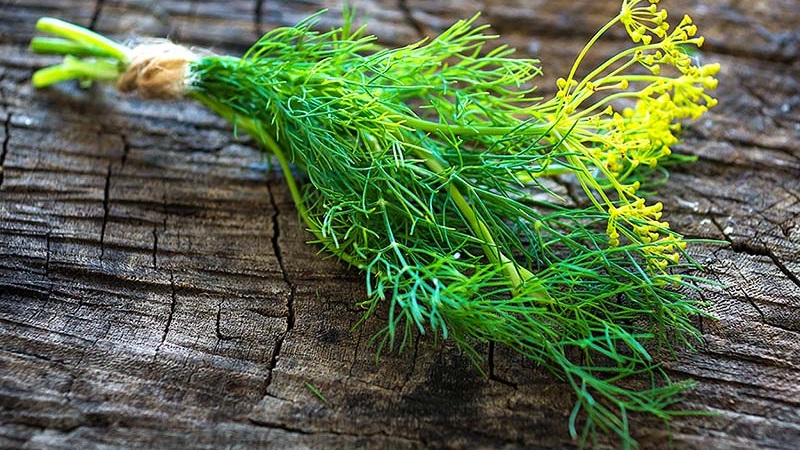
Let's study in detail the features of each:
- Dill on greens... Inexperienced gardeners mistakenly assume that such dill lacks umbrellas. However, this is not true, since the plant still has umbrellas, they just appear later. Dill for greens retains its freshness for a long time, which is why many summer residents love it so much. The varieties for greens have a high and stable yield, a bright aroma, a rich color. Bushes are compact, covered with small leaves.
- Dill on umbrellas... Tall and vigorous plants grow in a chaotic manner throughout the garden. Yellow and green umbrellas are used for preservation, they add a spicy herbal aroma to dishes. Umbrellas also produce quality seeds, which will grow a new crop next season.
Important! As expected, dill is early maturing, mid-maturing and late. Some varieties are planted on a balcony or loggia, some on personal plots.
The best varieties
Dill is unpretentious in care, most varieties take root in any climatic region... Let's consider common varieties and find out their strengths and weaknesses.
Read also:
Mammoth
Variety for greens Mammoth belongs to the mid-season... It has juicy and delicate greens with a rich fresh aroma. The plant is cold-resistant, suitable for growing both in the south of the country and in Siberia. Prefers nutritious loose soils with neutral acidity.
To increase yields, the beds are dug up and mulched before planting... Mammoth care does not require special knowledge, the main thing is to water the beds and thin out the rows in order to prevent the appearance of pests.
Maturation and return are friendly, from 1 sq. m gardeners collect 2-3 kg of fresh herbs. Dill is used for drying or freezing, added to salads and soups.
Interesting. It is impossible to prepare the famous French tartar sauce without dill. For cooking, in addition to herbs, you will need pickled cucumbers, garlic and mayonnaise. Serve tartare with fish and seafood, vegetable side dishes. Dill is also added to canned cucumbers, tomatoes and bell peppers. Use both greens and umbrellas.
Superdukat
The birthplace of the variety with the interesting name Superdukat - Denmark... It is late ripening, summer residents harvest after 100-105 days from the moment of planting. Semi-spreading bushes, medium-sized rosette. Leaves are rich green, with a strong aroma. Superdukat is planted on clean and fertile soil.
Watered once every 5 days, with a lack of moisture, the leaves coarse... The optimum water temperature for irrigation is not less than +18 ° С. Moisten the soil in the morning or evening to avoid sunburn.Subject to all agrotechnical rules, the yield is about 3.5 kg per 1 sq. m. In application Superdukat is universal.
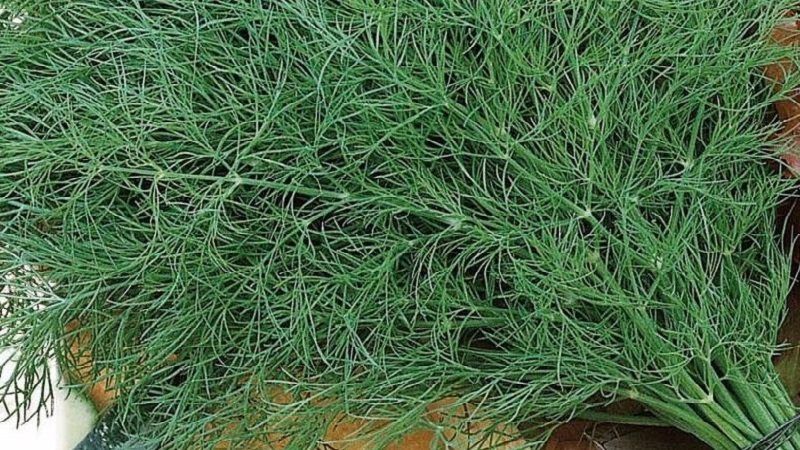
Gribovsky
Unpretentious frost-resistant dill ripens in 50-60 days... Greens are planted in late April and early May. Gribovsky grows quickly on loose and well-lit soils. In addition to watering, gardeners regularly organize feeding. For this, organic substances and mineral components are used: liquid manure, compost, potassium salt, superphosphate.
The interval between dressings is 15-20 days... Average yield, from 1 sq. m collect about 1.5 kg. Dill Gribovsky is a part of various seasonings for meat and fish, has a pronounced taste. Suitable for freezing and fresh consumption.
Salute
The late-ripening variety Salute is recommended to be planted in seedlings... This allows you to get the best yield and avoid common diseases. Seedlings are prepared 2-3 weeks before dill is planted in the ground. Seedlings are watered only with warm water and fertilized with liquid organic matter.
Dill is planted at a distance of 25-30 cm from each other... The bushes of the Salute variety are high, up to 35 cm.The leaves are dense, with a slight waxy coating. The taste and aroma are strongly pronounced; Salute dill is dried for the winter and added to dishes.
Interesting. Regular consumption of dill in small amounts will help you lose weight. Greens contain a special essential oil with a spicy aroma. It speeds up metabolism and removes harmful substances from the body. Dill helps rid the body of excess fluid and prevents bloating. Dill tea is especially effective (2 bunches of greens are used for 1 liter of boiling water).

Diamond
The Almaz variety has powerful bushes and a dense rosette... The leaves are dense and wide, with a strong aroma. The diamond does not bloom for a long time, therefore, fresh greens are collected throughout the summer. The plant is planted in seedlings. In addition to watering and fertilizing, gardeners do hardening: they take out seedlings to the balcony every day for 2-3 hours.
Hardening strengthens plant immunity and prevents the development of diseases... When the first leaf appears, the seedlings dive - they are planted in a larger container. Almaz is transplanted into the garden in early May, after frosts. Dill is used to make aromatic spices and herbs.
It can be useful:
Lesnogorodsky
Mid-season Lesnogorodsky ripens 65-70 days after planting... The semi-spreading bush has large and wide leaves. The germination is friendly, the variety is unpretentious in care. To obtain a rich harvest in the first 7 days, the bushes are covered with plastic wrap. Then it is removed and the beds are watered.
Flowering begins only 2 months after germination... Taste and marketability are excellent. Lesnogorodsky is planted on the balcony or windowsill. For this, plastic containers with pallets are purchased. They are lightweight and easy to use.
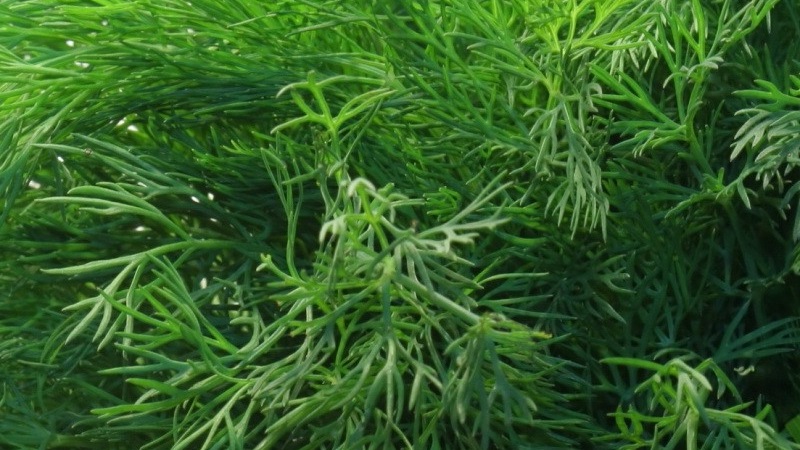
Abundant
Shrub variety Abundant has immunity to insect pests, rarely gets sick... The greens are mid-season, the harvest is early, they are harvested 40 days after planting. Good germination, bushes of medium height.
It is unpretentious in planting and care, it is popular with gardeners in central Russia... The taste is delicate and pleasant. Abundant is added to fresh vegetable salads, appetizers and main courses. The aroma is unexpressed, neutral.
Amazon
The mid-season Amazon variety ripens in 40-45 days. They are planted both as seedlings and seeds in open ground. The socket is slightly raised and looks up. There are many leaves, dill is juicy and fragrant. The variety for greens is sensitive to watering, so gardeners use only clean and warm water.
Otherwise, Amazon is unpretentious, during the season it is fed 1-2 times with organic matter or minerals. Harvested in late June and early July.Dill is consumed fresh, frozen and dried for the winter. Amazon does not lose its taste and appearance for up to six months.
Interesting. In the 17th century, dill was endowed with magical powers and was used as amulets and talismans against evil spirits. The bundles were hung all over the house and at the front door.
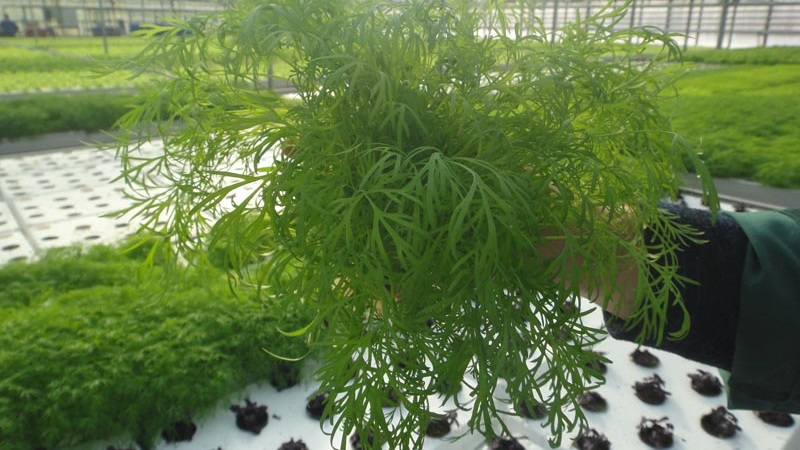
Borey
Tall perennial variety Borey ripens in 50-60 days... The bushes are tall, up to 120 cm. Boreas is resistant to diseases and pests, tolerates frosts and frequent rains without consequences. The foliage is dense, the dill umbrellas have a bright aroma. The yield is stable, from 1 sq. m collect about 4 kg of greens. Boreas is suitable for freezing and fresh consumption.
Anchor
Large seeds are used for planting the Anker varietyafter disinfecting them in a solution of potassium permanganate or boric acid. To increase the yield, seed material is germinated for 5-7 days. To do this, the seeds are wrapped in wet gauze and removed to a warm place, periodically adding a little water.
Choose a cloudy, windless day for landing... Anker grows in 65-70 days, the bushes are large and powerful. Variety from 1 sq. m gives up to 3 kg of umbrellas and dill. The aroma is bright, spicy.
Ataman
Gardeners appreciate the Ataman variety for its high marketability and taste.... It is recommended to plant in soils with neutral acidity. The beds are pre-cleaned of debris and dug up. The light-loving Ataman ripens in 50-55 days. Bushes of medium height, spreading, bright green color. Add fresh and dried peppers to marinades, salads and sauces.
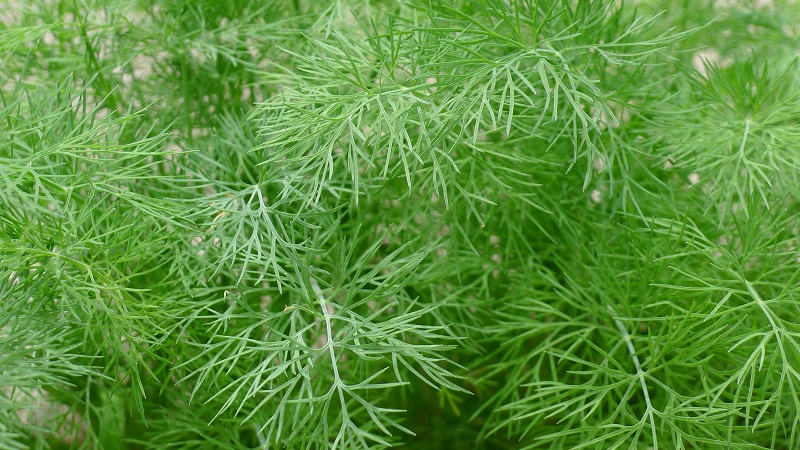
How to choose the right variety
The choice of a variety depends on a number of factors.: growing region, purpose, planting and care. Some gardeners choose unpretentious varieties for the south, others for the northern regions.
Criterias of choice
First of all, attention is paid to the maturation of greens... For the temperate zone of Russia, early maturing dill is chosen; in the conditions of a short and cool summer, the plant does not have time to get sick and shows the best yield. For the south, late-ripening bushes in an extended period of fruiting are suitable.
It is also important to consider the purpose of using dill.: varieties Amazon and Salyut are great for freezing, and Borey - for preparing winter preparations. To obtain greenery, Lesnogorodsky, Almaz and Mammoth are grown.
Important! Heat-loving varieties such as Amazon and Abundant are grown in greenhouse conditions. Cold-resistant - Lesnogorodsky and Gribovsky - in open beds. Before buying seeds, gardeners carefully read the recommendations on the packaging from the manufacturer.
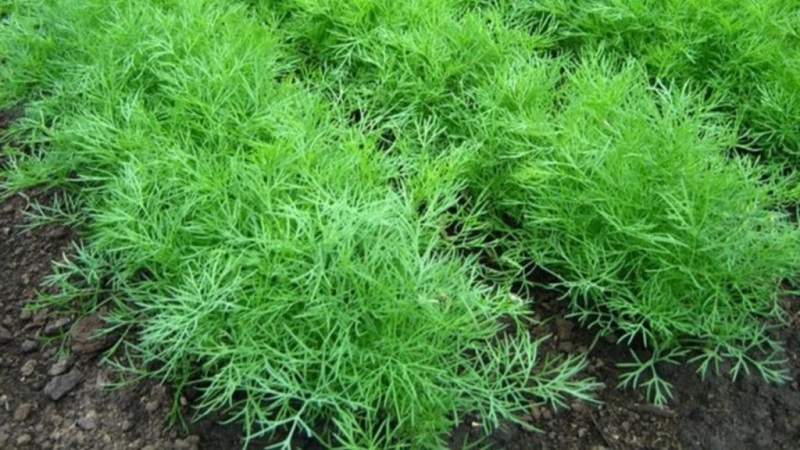
Selection of varieties depending on the growing region
The amount of the crop depends not only on compliance with agrotechnical rulesbut also from the growing region:
- The southern regions are characterized by fertile nutritious soils, warm climate, long summer, and no frost. In such conditions Superdukat and Salute show themselves perfectly.
- For cultivation in areas with sharp weather changes and short summers, the Gribovsky and Mammoth varieties are recommended. The varieties are cold-resistant, less susceptible to insects.
Farmers reviews
Some people prefer to grow dill for greens, others like to get fragrant umbrellas. Let's study a few reviews from experienced gardeners.
Maria, Rostov-on-Don: “I love greens, especially dill. The best varieties are Salut and Almaz. Fragrant and aromatic bushes delight with a harvest of 1.5-2 months. I plant them after potatoes or cabbage, water them and fertilize them with liquid droppings a couple of times a season. The taste is pleasant, I add dill to soups and salads, and I freeze some of it for the winter. "
Lilya, Ufa: “A neighbor advised to plant dill Gribovsky. I was pleased with the harvest. Bushes of medium height, tender greens, small leaves. The dill was not sick, there were few weeds. I recommend Gribovsky for planting ".
Roman, Tyumen: “I planted dill Mammoth using seedlings.The bushes sprout slowly, the tips of the leaves are yellow-green. Several plants have generally withered, although watered regularly. I was left disappointed ".
Conclusion
The best varieties of dill for greens are Salut and Almaz, for umbrellas - Borey and Anker. For the northern regions, they use a seedling method of planting, in the south and in the middle lane they are planted with seeds. The seed is disinfected and germinated to increase germination. In care, dill does not require special knowledge of agricultural technology, it is enough to observe the crop rotation, the regime of irrigation and feeding.
Also, the soil is regularly loosened and weeds are removed - this improves the quality of the soil, saturates the plant roots with oxygen. Harvested from July to August. Housewives add greens to dishes, freeze and dry. In winter, greens are always at the table - they will add a spicy aroma to dinner and enrich the body with vitamins and minerals.